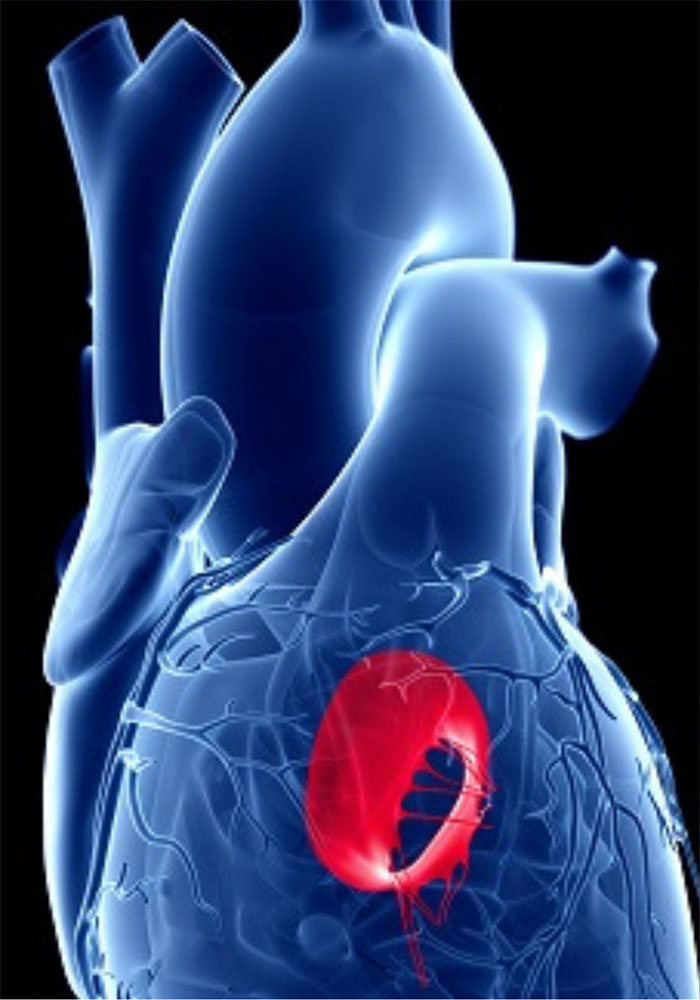MITRAL REGURGITATION

MITRAL REGURGITATION
Mitral Regurgitation connects the left atrium with the left ventricle.
It is a valve with a complex anatomical structure. Beyond it’s two leaflets, the so called mitral device involves as well the papillary muscles and the tendon chordae.
Under normal circumstances, following the flow of blood from the left atrium to the left ventricle (which occurs during the diastolic phase of the heart cycle), the mitral valve closes tightly and does not allow for backward blood flow to the left atrium. Mitral regurgitation is a condition in which abnormal return of blood (reflux) from the left ventricle to the left atrium is observed. The diagnosis is made by echocardiography.
If mitral regurgitation is established acutely the left atrium can not effectively manage the increased blood volume which results in increased intra-cavity pressures which are, hence, transferred to the lungs provoking acute pulmonary edema. Urgent surgical treatment is therefore required.
If mitral regurgitation is established gradually – chronic mitral regurgitation – then the heart has sufficient time to adjust: the size of left atrium is increased and left ventricle develops eccentric hypertrophy. This results in an balanced (compensated) function the heart for a time period, until it is permanently deregulated (decompensted).
Based on its etiology, mitral regurgitation is classified into primary (damage to one of its parts) or secondary (due to left ventricular dysfunction). Causes include papillary myocardial infarction, tendon chordae rupture, rheumatic fever, infectious endocarditis, mitral valve prolapse, etc.
Mitral regurgitation is a “deceptive” disease, as it may remain asymptomatic for long and be only diagnosed after heart failure has been established.
Treating mitral regurgitation is a complex problem. Therapeutic intervention depends on both the cause of the insufficiency and the status of the heart in terms of systolic function and dimensions (dilation). In any case only severe mitral regurgitation is to receive advanced non-pharmaceutical treatment. If mitral regurgitation of a moderate degree is diagnosed, regular monitoring of the patient is suggested, so that possible deterioration and need for intervention may be timely recognized.
When technically feasible, surgical repair is preferred – over replacement with a prosthetic valve. A critical point in the decision making process is to choose the right timing for the intervention: this should be done as soon as there are signs of functional and / or anatomical deterioration of heart function. In some patients suffering from symptomatic severe mitral regurgitation, who are considered at high risk for cardiac surgery, there is the potential of novel transcatheter -non surgical- treatment (edge-to-edge repair using special devices such as mitraclip).
